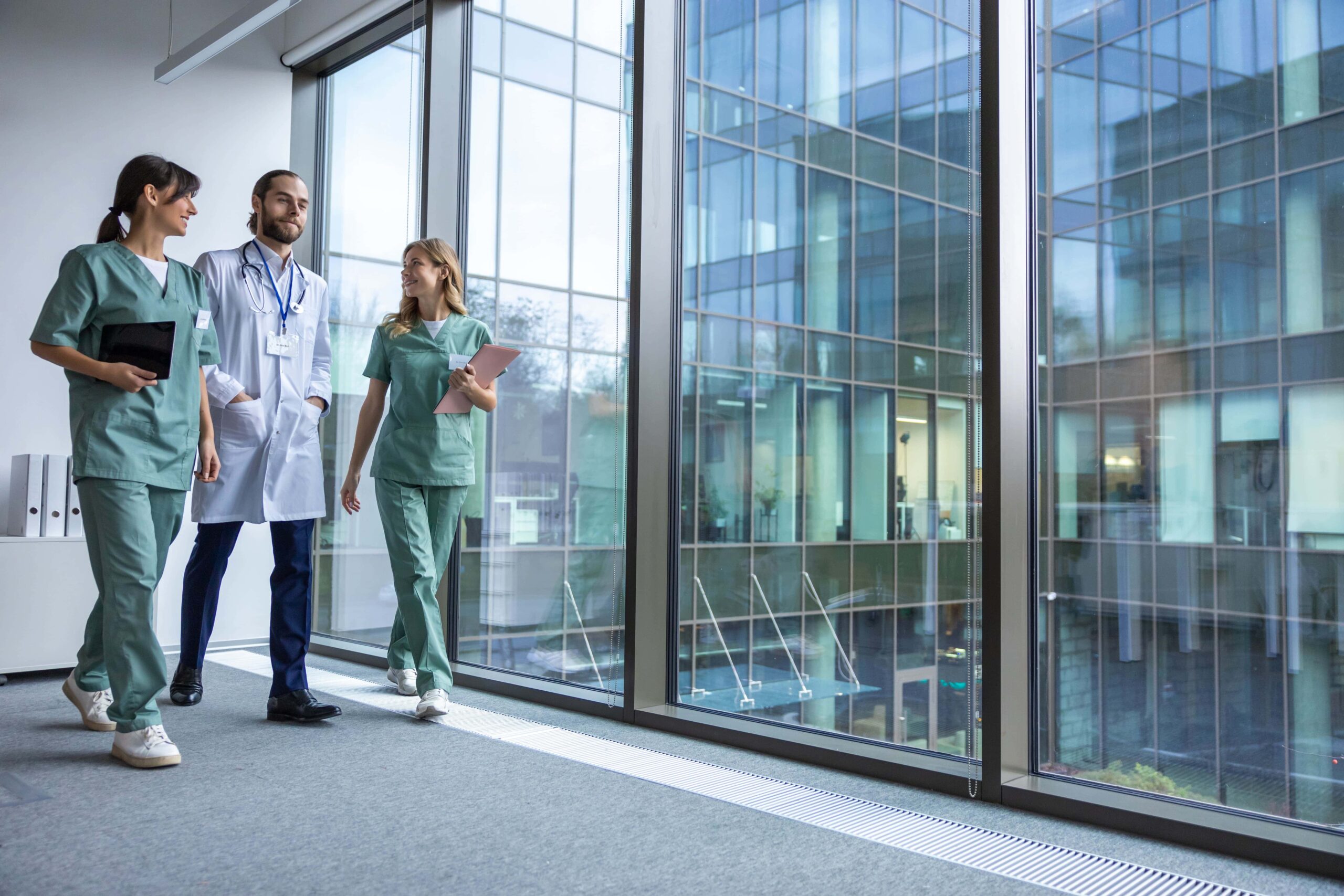Businesses in New York City are increasingly turning to LED retrofit solutions for their signage needs, recognizing the significant benefits these upgrades offer in one of the world’s most competitive commercial environments. LED Business Sign Retrofit Services provide a cost-effective way to transform outdated, energy-consuming signs into modern, efficient marketing tools that enhance visibility while reducing operational costs. In the fast-paced New York business landscape, where first impressions matter and energy costs run high, retrofitting existing signage with LED technology represents a strategic investment that delivers both immediate visual impact and long-term financial returns.
The urban environment of New York presents unique challenges and opportunities for business signage. With its iconic skyline, dense commercial districts, and 24/7 operational demands, NYC businesses face intense competition for visual attention while navigating strict signage regulations and sustainability goals. LED retrofit services have emerged as a specialized solution that addresses these challenges, helping office buildings, retail establishments, and professional service providers modernize their visual presence without the disruption and expense of full sign replacement. As energy efficiency becomes increasingly important in commercial properties, LED sign retrofits align perfectly with New York’s ambitious climate initiatives while offering businesses tangible benefits in terms of visibility, cost savings, and brand enhancement.
Understanding LED Business Sign Retrofits
LED business sign retrofits involve the conversion of existing signage from traditional lighting systems—typically fluorescent, neon, or incandescent—to energy-efficient LED technology. Rather than replacing entire sign structures, retrofits utilize the existing framework while upgrading the illumination components, making them an economical solution for businesses looking to modernize their visual presence without starting from scratch. This approach is particularly valuable in New York’s competitive business environment, where maintaining brand visibility is essential while managing operational costs.
- Component Replacement: Retrofits typically involve replacing outdated ballasts, transformers, and traditional bulbs with LED modules, drivers, and power supplies while keeping the original sign structure intact.
- Energy Infrastructure Updates: The process often includes upgrading wiring and electrical connections to accommodate the different power requirements of LED technology.
- Control System Integration: Modern LED retrofits can incorporate programmable controls for brightness adjustments, scheduling, and even dynamic content changes in digital displays.
- Structural Reinforcement: Some retrofits require minor structural modifications to accommodate the new lighting components while ensuring compliance with New York’s safety regulations.
- Weatherproofing Upgrades: Especially important in New York’s variable climate, retrofits often include improved sealing and protection against moisture, temperature fluctuations, and urban pollution.
The technical aspects of LED retrofits require specialized expertise to ensure optimal performance and longevity. Professional retrofit services employ lighting designers and technicians familiar with both the technical requirements of LED systems and the specific challenges of the New York urban environment. Properly executed retrofits should address not just the visible aspects of signage but also the underlying systems that ensure reliable operation in all conditions. With proper implementation planning, businesses can achieve the transition with minimal disruption to their operations—an important consideration for New York’s fast-paced business environment.
Benefits of LED Sign Retrofits for New York Businesses
New York businesses face unique challenges with high energy costs, intense competition for visual attention, and stringent environmental regulations. LED sign retrofits offer compelling advantages that address these specific challenges while providing both immediate and long-term benefits. Understanding these advantages helps business owners make informed decisions about investing in sign upgrades as part of their operational strategy.
- Dramatic Energy Savings: LED technology typically reduces signage energy consumption by 70-90% compared to traditional lighting, directly addressing rising energy costs in New York’s commercial districts.
- Extended Operational Lifespan: While traditional sign lighting may require replacement every 1-2 years, quality LED components can function effectively for 50,000-100,000 hours (approximately 5-10 years of continuous operation).
- Reduced Maintenance Requirements: LED systems eliminate the frequent bulb replacements and repairs associated with traditional signage, reducing service calls and associated labor costs.
- Enhanced Visibility and Brightness: LEDs provide superior illumination that cuts through New York’s visual noise, making businesses more noticeable even in Times Square and other high-stimulus environments.
- Environmental Compliance: LED retrofits help businesses align with New York City’s Climate Mobilization Act and other sustainability initiatives while potentially qualifying for energy efficiency incentives.
- Improved Color Rendering and Consistency: LEDs maintain consistent color and brightness levels throughout their lifespan, ensuring brand colors remain true and vibrant year after year.
The financial impact of LED retrofits is particularly significant in New York, where commercial electricity rates rank among the highest in the nation. Many businesses report full investment recovery within 12-24 months through reduced energy consumption alone, with additional savings accumulating through decreased maintenance needs. Beyond the direct cost benefits, improved signage visibility contributes to brand recognition and customer engagement—critical factors in New York’s competitive business landscape. For organizations focused on sustainability goals, LED retrofits represent a visible demonstration of environmental commitment, potentially enhancing brand perception among increasingly eco-conscious New York consumers and stakeholders.
The LED Sign Retrofit Process for New York Businesses
Understanding the retrofit process helps New York business owners prepare for this transition and ensure minimal disruption to their operations. While each project has unique aspects, successful LED sign retrofits typically follow a structured approach that addresses both technical requirements and business continuity concerns. Working with experienced providers familiar with New York’s specific challenges ensures a smoother implementation experience.
- Comprehensive Site Assessment: Professional retrofit providers begin with a thorough evaluation of existing signage, examining structural integrity, electrical systems, and visibility factors specific to the location’s urban context.
- Custom Design Development: Based on assessment findings, lighting designers create retrofit specifications that optimize illumination while preserving brand identity and addressing any location-specific challenges.
- New York Permit Navigation: Experienced providers handle the complex permitting process, including Department of Buildings approvals, electrical permits, and special considerations for landmark districts or historic buildings.
- Efficient Installation Scheduling: Implementation is coordinated using effective scheduling systems to minimize business disruption, often occurring during off-hours for minimal impact on operations.
- Quality Assurance Testing: Post-installation evaluations ensure optimal performance, checking for uniform brightness, proper color rendering, and compliance with all specifications and regulations.
Throughout this process, effective project communication planning is essential to coordinate between business stakeholders, installation teams, building management, and regulatory authorities. New York’s dense urban environment presents unique logistical challenges, from traffic considerations to building access restrictions, requiring specialized expertise to navigate successfully. Many retrofit providers offer project management services that handle these complexities, allowing business owners to focus on their core operations while the upgrade progresses. Following installation, reputable providers offer training on any new control systems and establish preventative maintenance schedules to ensure continued optimal performance, maximizing the longevity of the investment in New York’s demanding environmental conditions.
New York Regulations and Compliance Considerations
New York City has some of the most comprehensive signage and lighting regulations in the country, designed to address urban aesthetic concerns, safety requirements, energy efficiency goals, and historical preservation needs. Businesses undertaking LED sign retrofits must navigate this complex regulatory landscape to ensure their projects remain compliant while achieving their visual communication objectives. Understanding these requirements early in the planning process helps avoid costly delays and modifications.
- NYC Zoning Resolution Requirements: Different commercial zones have specific limitations on sign size, projection, height, and illumination levels that must be adhered to even during retrofits.
- Landmark District Special Considerations: Businesses in New York’s numerous historic districts face additional review processes through the Landmarks Preservation Commission, which may restrict certain lighting styles or technologies.
- Electrical Code Compliance: All retrofits must meet the NYC Electrical Code, requiring licensed professionals for installation and inspection, with special attention to the unique challenges of upgrading older buildings.
- Energy Conservation Code: LED retrofits must comply with New York City’s Energy Conservation Code, which includes specific requirements for lighting power density and controls in alignment with the city’s carbon reduction goals.
- Building Department Permits: Most significant retrofits require permits from the Department of Buildings, with application processes that can take several weeks and may require professional engineering or architectural stamps.
Working with retrofit providers experienced in New York’s regulatory compliance can significantly streamline the approval process. These specialists maintain relationships with relevant departments and stay current on regulatory changes that might impact sign projects. They can also identify potential exemptions or alternative compliance paths that might be available for specific situations. Beyond city regulations, building-specific rules established by landlords or management companies may impose additional requirements on signage modifications. Successful retrofit projects address all these layers of compliance while still achieving the visibility and brand expression businesses need in New York’s competitive environment.
Cost Considerations and ROI for LED Sign Retrofits
Financial planning for LED sign retrofits requires understanding both the initial investment and the expected returns. For New York businesses, where operating costs run higher than national averages, the economic case for LED conversion is particularly compelling when examined over the medium to long term. Comprehensive cost analysis helps businesses make informed decisions and secure appropriate financing for these capital improvements.
- Initial Investment Factors: Retrofit costs typically range from $50-200 per square foot of signage, varying based on complexity, accessibility, existing infrastructure condition, and quality of LED components selected.
- Energy Cost Reduction: New York’s high electricity rates (averaging 21-25 cents per kWh for commercial customers) mean significant savings—often 70-90% reduction in sign-related energy consumption—creating substantial ongoing returns.
- Maintenance Savings: The elimination of frequent bulb replacements and service calls in New York’s high-labor-cost market represents a major component of ROI, often saving thousands annually for medium to large signs.
- Available Incentives: New York State’s Clean Energy Programs, NYSERDA incentives, and utility-specific rebate programs can offset 10-30% of retrofit costs for qualifying projects that meet energy efficiency thresholds.
- Tax Advantages: Potential benefits include accelerated depreciation under Section 179D for commercial building energy efficiency improvements and other business equipment deductions.
Effective cost management for retrofit projects requires balancing upfront quality with long-term performance. While less expensive components might reduce initial costs, they typically offer shorter lifespans and lower efficiency, diminishing ROI over time. Most New York businesses achieve complete return on investment within 1-3 years, depending on sign size, usage patterns, and specific energy rates at their location. Beyond direct financial returns, businesses should consider indirect benefits that impact the overall value proposition, including enhanced visibility, improved brand perception, and alignment with corporate sustainability goals. Some retrofit providers offer financing options that allow businesses to implement projects with minimal upfront capital, structuring payments to be offset by the realized energy savings—essentially creating cash-flow-positive improvements from day one.
Choosing the Right LED Retrofit Provider in New York
Selecting the appropriate service provider is critical to the success of LED sign retrofit projects in New York’s complex business environment. The right partner brings not only technical expertise but also specific knowledge of local conditions, regulations, and business needs. Taking time to evaluate potential providers helps ensure quality results and smooth project execution.
- New York-Specific Experience: Look for providers with substantial portfolio examples in similar New York neighborhoods, demonstrating familiarity with local challenges and regulatory nuances.
- Technical Capabilities: Evaluate the provider’s expertise across electrical engineering, lighting design, and structural modification—all essential components for successful retrofits in New York’s diverse building stock.
- Regulatory Knowledge: Qualified providers should demonstrate comprehensive understanding of NYC sign ordinances, electrical codes, landmark requirements, and building department procedures.
- Product Quality and Warranties: Assess the LED components offered, favoring those with manufacturer warranties of 5+ years and products rated for New York’s temperature ranges and environmental conditions.
- Project Management Capabilities: Given New York’s logistical complexities, strong project management with clear communication channels and effective team communication systems is essential.
Reputable providers will offer comprehensive consultations that address both technical and business considerations, helping you understand how the retrofit will impact your specific operation. They should provide detailed proposals that include energy savings projections, ROI analysis, implementation timelines, and clear scope definitions. Request reference contacts from previous New York clients with similar projects, particularly those in your industry or neighborhood. Ask specific questions about how the provider handled unexpected challenges, as these insights often reveal their problem-solving capabilities and commitment to client satisfaction. The best partners will also discuss post-installation support, including training, maintenance recommendations, and warranty service procedures. With the right provider, businesses can leverage specialized expertise to navigate New York’s unique retrofit landscape, transforming their signage while minimizing risks and maximizing returns.
Implementation Best Practices for Minimal Business Disruption
For New York businesses, where operating hours may extend late into the evening or even 24/7, implementing sign retrofits without disrupting normal operations requires careful planning and coordination. Following established best practices helps ensure smooth execution while maintaining business continuity throughout the upgrade process.
- Strategic Scheduling: Plan installation during periods of lowest customer traffic or business activity, utilizing scheduling systems with key features that accommodate both business needs and contractor availability.
- Phased Implementation: For businesses with multiple signs or complex installations, breaking the project into stages can minimize the impact on operations while allowing for quality control at each phase.
- Clear Communication Plans: Develop comprehensive communication strategies for staff, customers, and neighboring businesses, setting expectations about temporary changes during the retrofit process.
- Temporary Signage Solutions: Implement provisional signage where appropriate to maintain visibility and wayfinding during periods when primary signs may be unavailable during the retrofit.
- Contingency Planning: Prepare for potential challenges such as weather delays or unexpected structural issues, with clear decision paths and alternative approaches ready for implementation.
Effective resource utilization optimization is essential during implementation, ensuring that materials, equipment, and personnel are efficiently coordinated to minimize on-site time. This is particularly important in New York’s congested urban environment, where access restrictions and limited workspace are common challenges. Work with providers who understand the importance of thorough pre-installation preparation, including pre-fabrication of components where possible to reduce on-site assembly time. Establish clear quality control checkpoints throughout the implementation process, with specific criteria for successful completion of each stage before proceeding to the next. Documenting the retrofit process, including before and after measurements of energy consumption and light output, provides valuable reference information for future maintenance and potential expansions. By following these best practices, New York businesses can achieve successful LED sign retrofits while maintaining operational continuity and customer experience during the transition.
Future-Proofing Your LED Sign Investment
The digital signage landscape continues to evolve rapidly, with new technologies offering increasingly sophisticated capabilities. For New York businesses making the investment in LED retrofits, considering future expansion and technology integration can maximize the long-term value of their signage infrastructure. Forward-thinking approaches ensure that today’s retrofit investments remain relevant and effective for years to come.
- Scalable Control Systems: Implement control infrastructure that can accommodate future expansion, allowing for the addition of new sign elements or functionality without requiring complete system replacement.
- IoT Connectivity: Consider integrated systems that enable remote monitoring and management capabilities, allowing for real-time adjustment, performance tracking, and predictive maintenance.
- Dynamic Content Capabilities: Even for initially static signs, infrastructure that can support future transitions to dynamic or programmable content provides flexibility as business needs evolve.
- Energy Monitoring Integration: Systems that track power consumption and efficiency metrics help optimize performance while providing documentation for potential incentive programs or sustainability reporting.
- Weather-Adaptive Technology: Features that automatically adjust brightness based on ambient light conditions and weather patterns optimize visibility while conserving energy—particularly valuable in New York’s variable climate.
Establishing ongoing maintenance protocols is critical for preserving the performance and longevity of LED sign investments. This includes regular cleaning schedules tailored to New York’s urban environment, periodic performance testing, and preventative component replacement based on manufacturer recommendations rather than waiting for failures. Consider service agreements that provide priority response for critical issues, particularly important for businesses that rely heavily on their signage for customer attraction. Keep documentation of all system specifications, warranties, and service records in accessible digital formats to facilitate future upgrades or troubleshooting. Staying informed about emerging technologies through industry publications and professional networks helps businesses anticipate future opportunities for enhancement. Many retrofit providers offer mobile technology interfaces that allow management to monitor sign performance remotely and receive alerts about potential issues before they affect business operations. With thoughtful future-proofing strategies, New York businesses can ensure their LED sign retrofits deliver maximum value throughout their operational lifespan.
Leveraging LED Retrofits for Marketing Advantage
Beyond the operational benefits, LED sign retrofits offer significant marketing opportunities for New York businesses. In a city where visual competition is intense, upgraded signage can serve as a powerful differentiator that enhances brand perception and customer engagement. Strategic approaches to leveraging these improvements can maximize the marketing impact of retrofit investments.
- Brand Consistency Enhancement: LED technology’s superior color rendering ensures exact matching of brand colors across different lighting conditions and times of day, strengthening visual identity.
- Sustainability Storytelling: Document and communicate the environmental benefits of your retrofit, including energy savings and reduced carbon footprint, appealing to eco-conscious New York consumers.
- Social Media Visibility: Before-and-after comparisons of retrofitted signage create engaging content for social media platforms, highlighting your business’s commitment to quality and improvement.
- Nighttime Presence: Enhanced illumination extends your marketing reach into evening hours, particularly valuable in New York neighborhoods with significant after-dark foot traffic and business activity.
- Special Event Capabilities: Programmable LED systems allow for special lighting configurations for holidays, promotions, or community events, creating memorable customer experiences and photo opportunities.
Coordinate your retrofit completion with other marketing initiatives to amplify impact, potentially using the improved signage as a focal point for grand reopenings or special events. Consider leveraging marketplace platforms to find qualified professionals who can help develop marketing campaigns around your improved visual presence. For businesses with multiple locations, retrofits provide an opportunity to standardize visual branding across sites, creating a more cohesive brand experience throughout New York neighborhoods. Some businesses incorporate QR codes or similar technologies into their retrofitted signage, creating bridges between physical and digital marketing channels. This integration supports strategic planning that aligns visual identity with broader business objectives. By thoughtfully leveraging the marketing potential of LED retrofits, New York businesses can maximize the return on their signage investments beyond energy and maintenance savings alone.
Conclusion
LED sign retrofits represent a strategic opportunity for New York businesses to simultaneously address multiple operational challenges while enhancing their market presence. The compelling combination of energy efficiency, reduced maintenance costs, improved visibility, and environmental benefits creates a strong business case for upgrading existing signage infrastructure. In New York’s competitive business environment, where operating costs are high and visual differentiation is challenging, LED retrofits offer particularly significant advantages that can directly impact bottom-line performance while supporting sustainability goals.
For businesses considering this upgrade, success depends on thoughtful planning and partner selection. Choosing experienced providers familiar with New York’s unique regulatory landscape and urban challenges is essential for smooth implementation. Establish clear objectives that align with your broader business strategy, considering not just immediate energy savings but also marketing opportunities, future expansion possibilities, and brand enhancement potential. Develop comprehensive implementation plans that minimize disruption to operations, particularly important in New York’s fast-paced business environment. Finally, document performance improvements and share sustainability achievements with stakeholders and customers, leveraging the investment for maximum business impact. With proper execution, LED sign retrofits can transform not just your signage but your overall business presence in the New York marketplace for years to come.
FAQ
1. How long does a typical LED sign retrofit take to complete in New York?
The timeline for LED sign retrofits in New York varies based on project complexity, sign size, and location accessibility. Simple retrofits for small to medium-sized signs typically take 1-3 days for installation once permits are secured. However, the entire process—including initial assessment, design, permitting, and installation—generally spans 3-6 weeks. Larger projects or those in landmark districts may require 8-12 weeks due to additional approval requirements. Weather conditions can also impact outdoor installation schedules, particularly during winter months. Working with providers experienced in scheduling flexibility helps ensure efficient project completion with minimal business disruption.
2. What permits and approvals are required for LED sign retrofits in NYC?
New York City requires several permits for sign retrofits, depending on the project scope and location. These typically include electrical permits from the Department of Buildings for wiring modifications, which must be filed by a licensed electrical contractor. Signs exceeding certain dimensions require additional construction permits. Properties in special districts or landmark zones need approval from the Landmarks Preservation Commission before work begins. For illuminated signs, compliance with the NYC Energy Conservation Code must be documented. Some locations also require approval from business improvement districts or property owner associations. Experienced retrofit providers typically handle this permitting process as part of their services, navigating the complex approval landscape to ensure all requirements are properly addressed.
3. How much energy savings can businesses expect from LED sign retrofits?
New York businesses typically achieve energy savings of 70-90% on sign-related electricity consumption after LED retrofits. For example, a business with a 4′ x 8′ double-sided sign illuminated 12 hours daily might see annual electricity costs for that sign drop from approximately $1,200 to $180-360 after retrofit. Actual savings vary based on several factors: the type of lighting being replaced (with neon-to-LED conversions offering the highest percentage savings), daily hours of operation, local utility rates, and the efficiency rating of the specific LED products selected. Businesses operating in areas with premium electricity rates, such as Manhattan, generally see faster ROI timeframes. These energy reductions also support business continuity during potential energy restrictions and contribute to overall sustainability goals.
4. Can existing sign cabinets and structures be used for LED retrofits?
In most cases, existing sign cabinets and structures can be successfully repurposed for LED retrofits, which is a key factor in cost efficiency. Professional assessment is necessary to determine structural integrity and compatibility with LED components. Factors evaluated include the cabinet’s weather sealing capabilities, ventilation requirements (as LEDs generate less heat but require different thermal management), internal space for LED drivers and wiring, and structural support adequacy. Metal cabinets typically adapt well to retrofits, while older plastic housings may require additional modifications to prevent heat-related warping. Even when some structural modifications are needed, utilizing the existing framework still provides significant cost advantages over complete replacement. Retrofit specialists can assess your specific signage and recommend the most efficient approach for your situation.
5. Are there specific regulations for LED brightness in New York City?
Yes, New York City has specific regulations governing sign brightness that apply to LED retrofits. The NYC Zoning Resolution restricts illuminated sign brightness in most commercial districts to no more than 50 foot-candles when measured from a distance of 10 feet. Additional restrictions apply in residential areas, where illuminated signs must not exceed 10 foot-candles at the same distance. Certain districts, particularly near residential zones, have curfew requirements that may restrict illumination during overnight hours. Digital LED displays face stricter regulations, including automatic dimming requirements based on ambient light conditions and limits on animation or message frequency changes. Working with providers familiar with these regulations ensures your retrofit meets compliance requirements while still achieving optimal visibility for your specific location and business needs.












